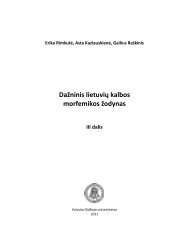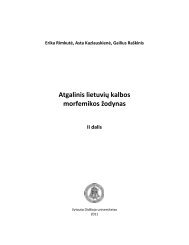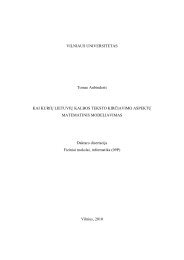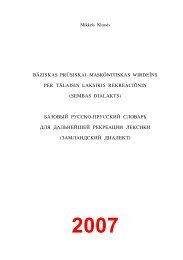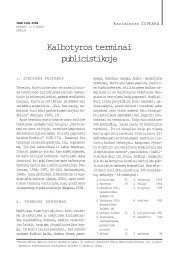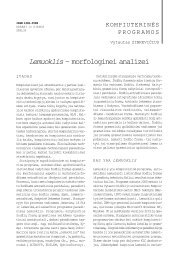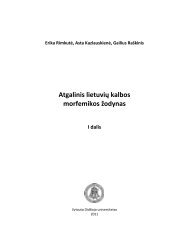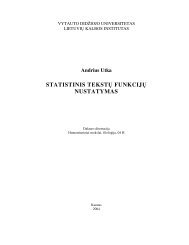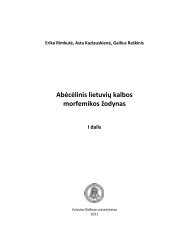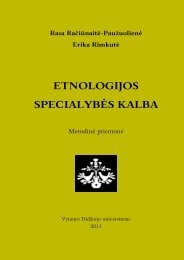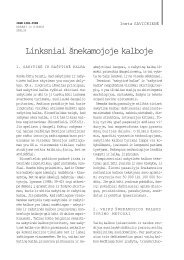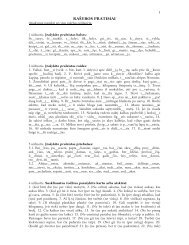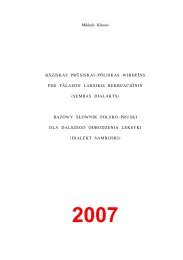HISTORICAL GRAMMAR OF OLD PRUSSIAN
HISTORICAL GRAMMAR OF OLD PRUSSIAN
HISTORICAL GRAMMAR OF OLD PRUSSIAN
You also want an ePaper? Increase the reach of your titles
YUMPU automatically turns print PDFs into web optimized ePapers that Google loves.
66<br />
V. Maþiulis<br />
bibl.). This word (a hapax legomenon) represents a comparative degree<br />
with a segment -sies-, which possibly implies Pr. *s’es- < *sÙes- Lith. -es- (ger-‡es-nis); cf. Endzelîns SV 72, PEÞ III l. c.<br />
This time I propose a new hypothesis: muisieson may be corrected<br />
into *muisiesnon (with an occasional or dissimilative loss of *-n-) < Pr.<br />
(dial.) acc. sg. *mûisÙesnan, cf. Lith. ger‡es-nis.<br />
* 154. An apophonic alternant Pr. *-is- of a comparative grade Pr.<br />
*-Ùes- < Balt. *-Ùes- seems to be present in words gen. sg. tawischas ‘nearer’,<br />
adv. toûls ‘more’ (< *tûlis) etc. (Stang Vergl. Gr. 268, PEÞ IV 203 s.v.<br />
tûlan), maldaisin ‘younger’ etc. Cf. also Endzelîns l. c., Stang l. c. PEÞ III<br />
101 ff. (s.v. maldaisin). For another opinion concerning the segment -aiin<br />
maldaisin cf. Schmalstieg OP 101–102.<br />
* 155. The superlative degree is expressed by a combination of the<br />
word ucka + a positive or a comparative degree of corresponding adjective.<br />
The superlative may be also expressed by the comparative degree<br />
directly; cf. Endzelîns SV 73, Stang Vergl. Gr. 269 f.



